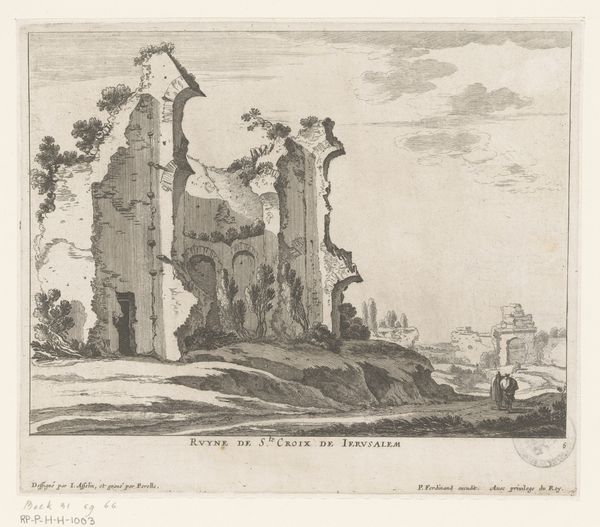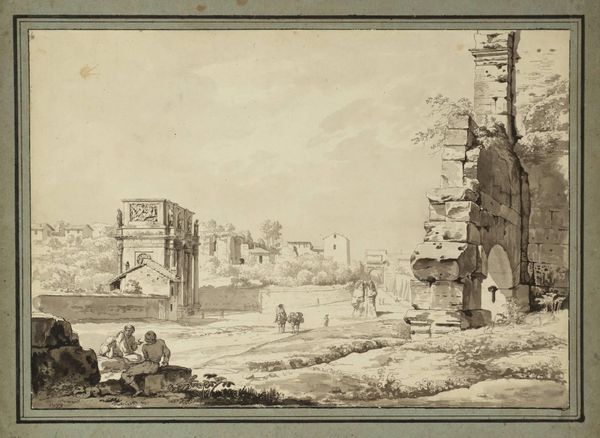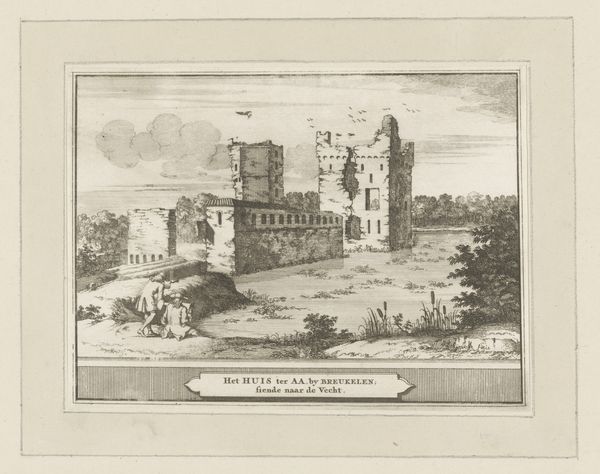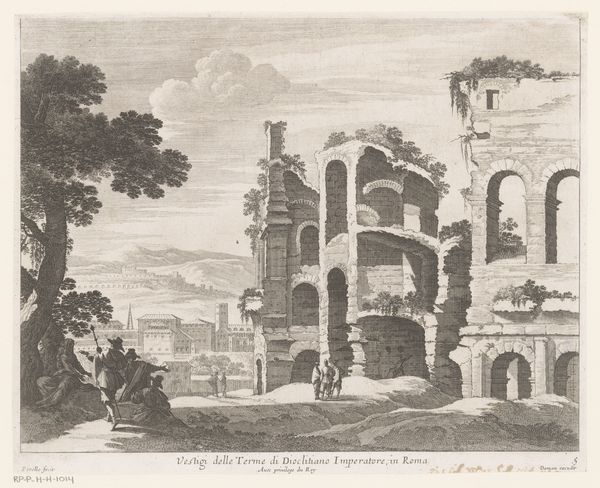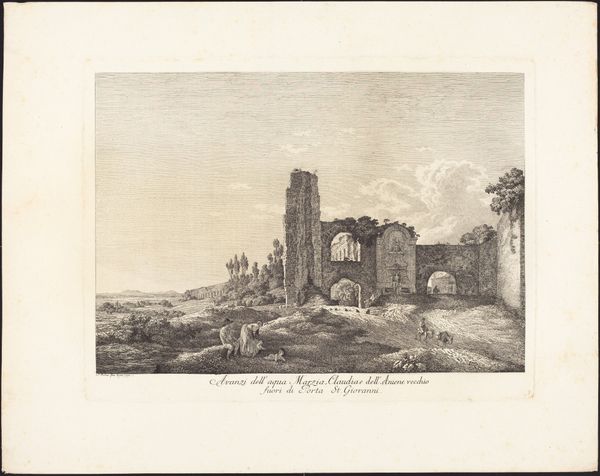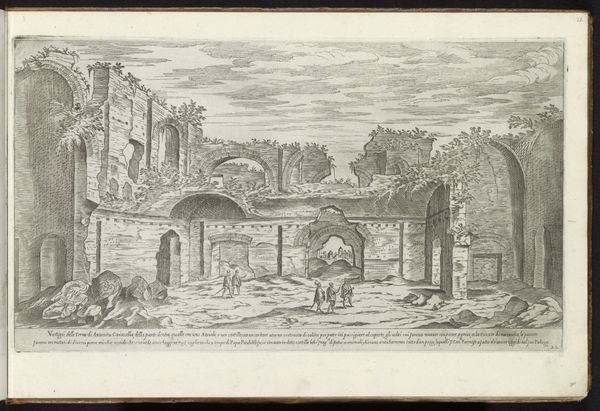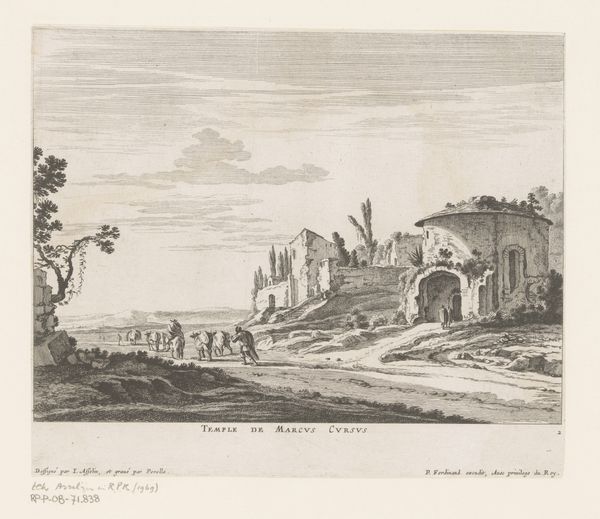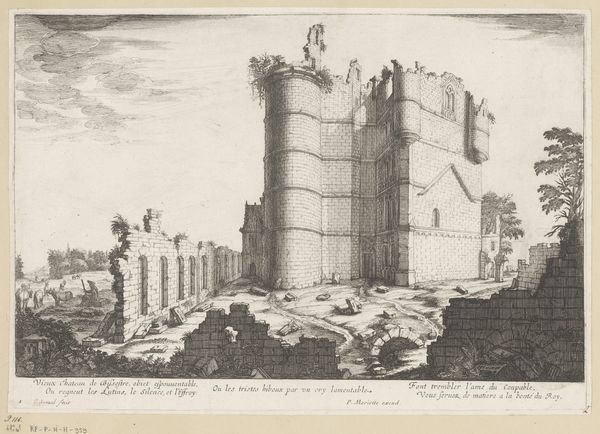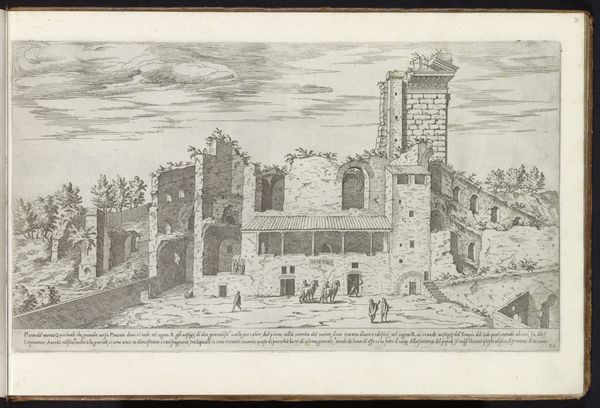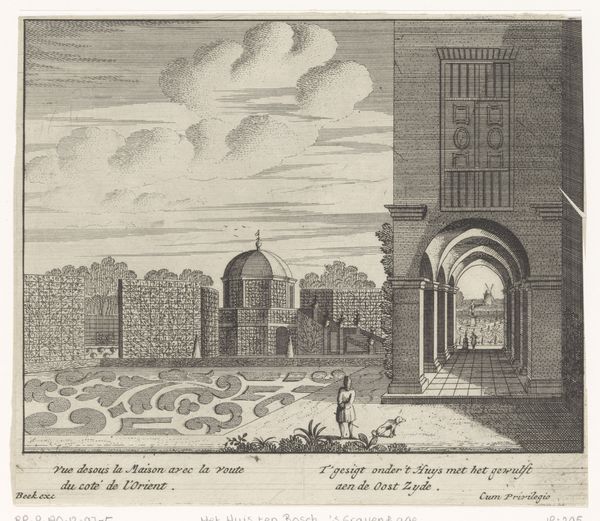
print, etching, engraving
#
baroque
# print
#
etching
#
old engraving style
#
landscape
#
house
#
mannerism
#
cityscape
#
history-painting
#
engraving
Dimensions: height 222 mm, width 320 mm
Copyright: Rijks Museum: Open Domain
Claude Goyrand made this etching of the ruins of Bicêtre castle sometime in the mid-17th century. Look closely, and you can see how Goyrand used etching to create this scene. Etching involves coating a metal plate with wax, scratching an image into the wax, and then submerging the plate in acid, which bites into the exposed metal. The plate is then inked and printed. You can see the fineness of the lines achieved with this method. But consider, too, what the image is actually showing: not the built castle, but its ruin. This was a time of great political and social upheaval in France. Royal power was under pressure, and places like Bicêtre—once symbols of authority—were literally crumbling. This print, then, is not just a demonstration of Goyrand's skill with etching. It’s a powerful meditation on labor, politics, and the ephemerality of power. It is a reminder that even the most durable materials are subject to decay.
Comments
No comments
Be the first to comment and join the conversation on the ultimate creative platform.
